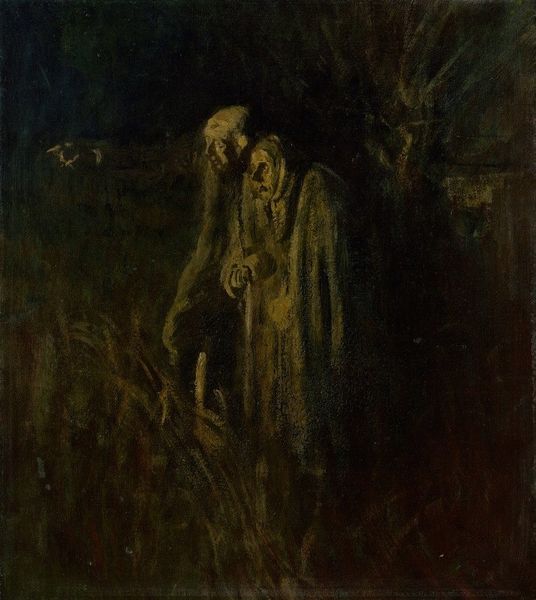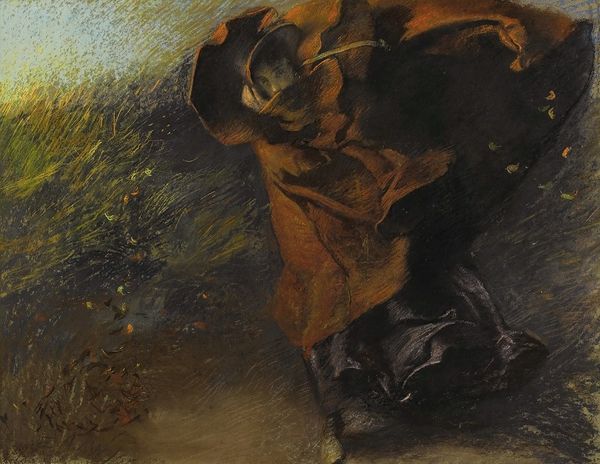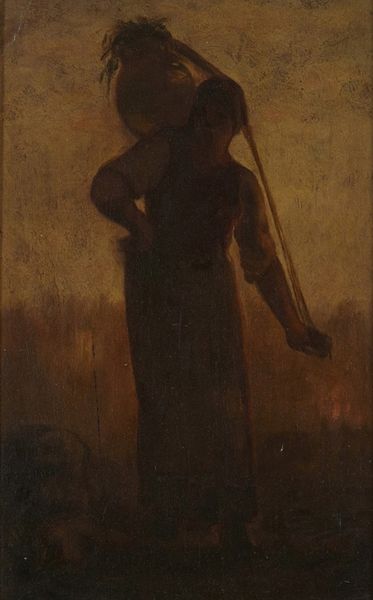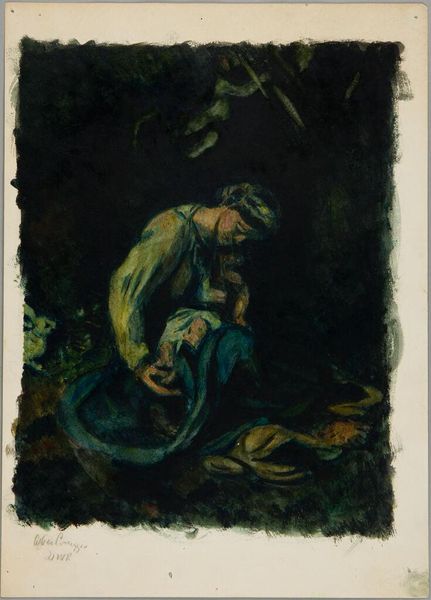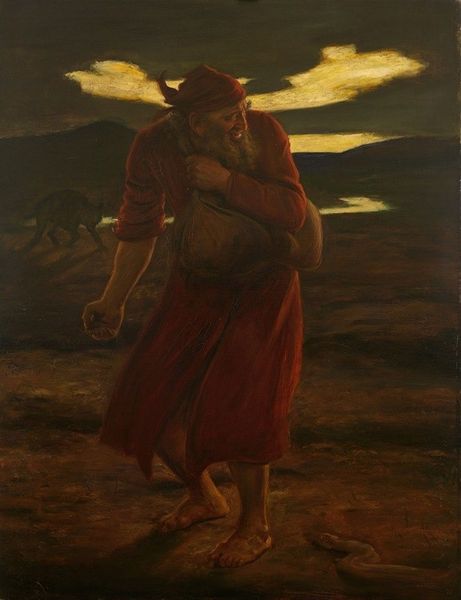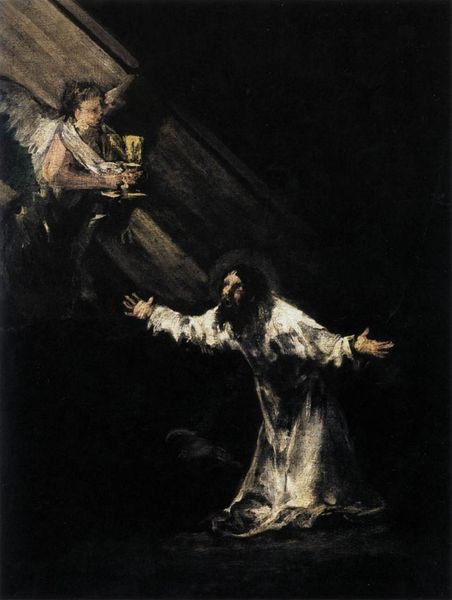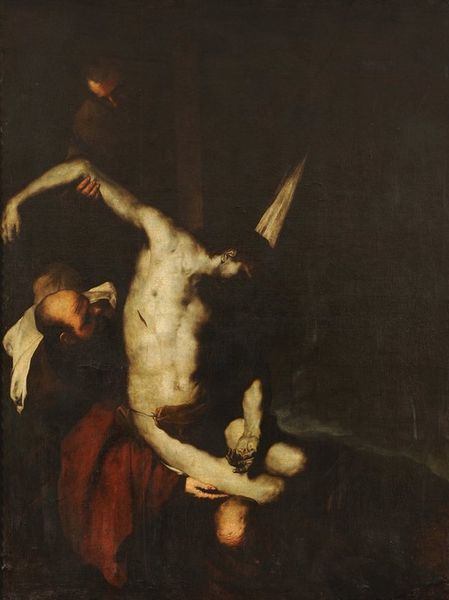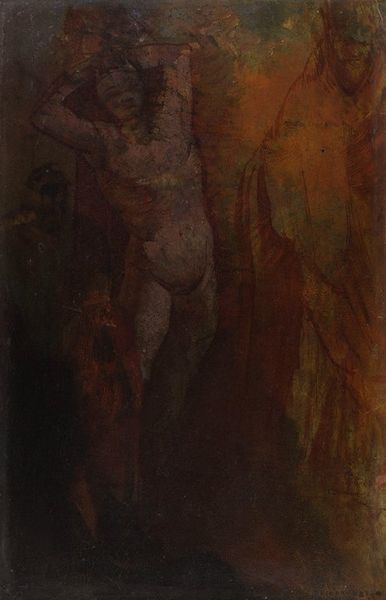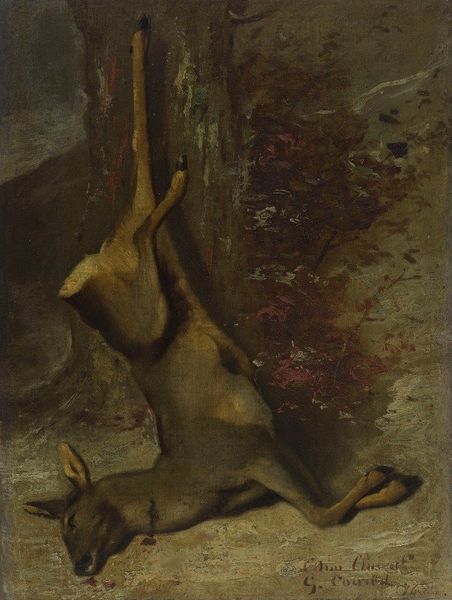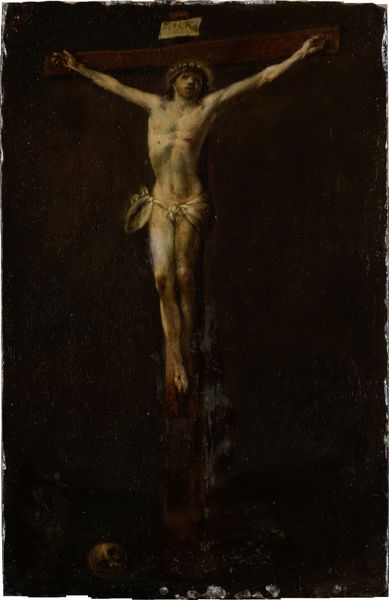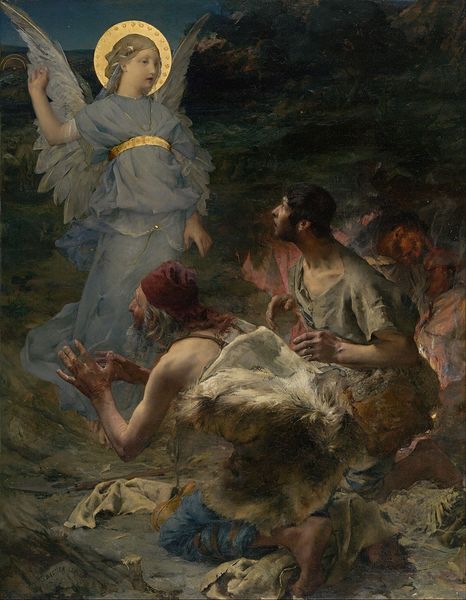
painting, oil-paint
#
baroque
#
fantasy art
#
painting
#
oil-paint
#
charcoal drawing
#
figuration
#
oil painting
#
chiaroscuro
#
history-painting
Copyright: Public Domain: Artvee
Editor: Here we have "Christ and Saint Peter," an oil painting, potentially baroque, by Hans Thoma. The figures seem to emerge from this hazy, almost murky background. It's quite dramatic, the contrast between light and dark really makes it, but I wonder... what's truly going on in terms of the materials themselves and their impact? What do you see? Curator: This painting, specifically the visible brushstrokes, points to the labor involved. Thoma's application of the oil paint is quite deliberate, isn’t it? Notice the way the light seems almost trapped within the layers of pigment, which, in the absence of an artwork date, points towards an artisanal form of preparation in the grinding and mixing of his pigments, with their distinct reflective qualities. How might this labor-intensive process affect our understanding of the subjects depicted? Editor: That's interesting. So you're saying the materiality itself is part of the story, not just a way to depict a religious scene. The artist's process becomes inherently valuable and speaks of their cultural surroundings... Curator: Precisely! And it begs the question: how does this act of 'making' – the deliberate layering, the conscious choice of materials – influence or even challenge traditional hierarchies between art and craft? In the era Thoma worked, these considerations were emerging into fine art, separating it from traditional, functional creation. What elements do you think Thoma might have struggled with, when embracing religious depictions with the artistic licence provided to the fine arts? Editor: I hadn't really considered the connection to labour so explicitly before, particularly in terms of materials in conjunction with subject! This way of thinking provides new means of investigating how to value and think of works such as "Christ and Saint Peter"! Curator: Indeed. Looking at the materiality invites us to rethink not just the representation, but also the very conditions that allow the creation and consumption of this type of artwork. This gives this devotional art-work a new sense of humanity.

